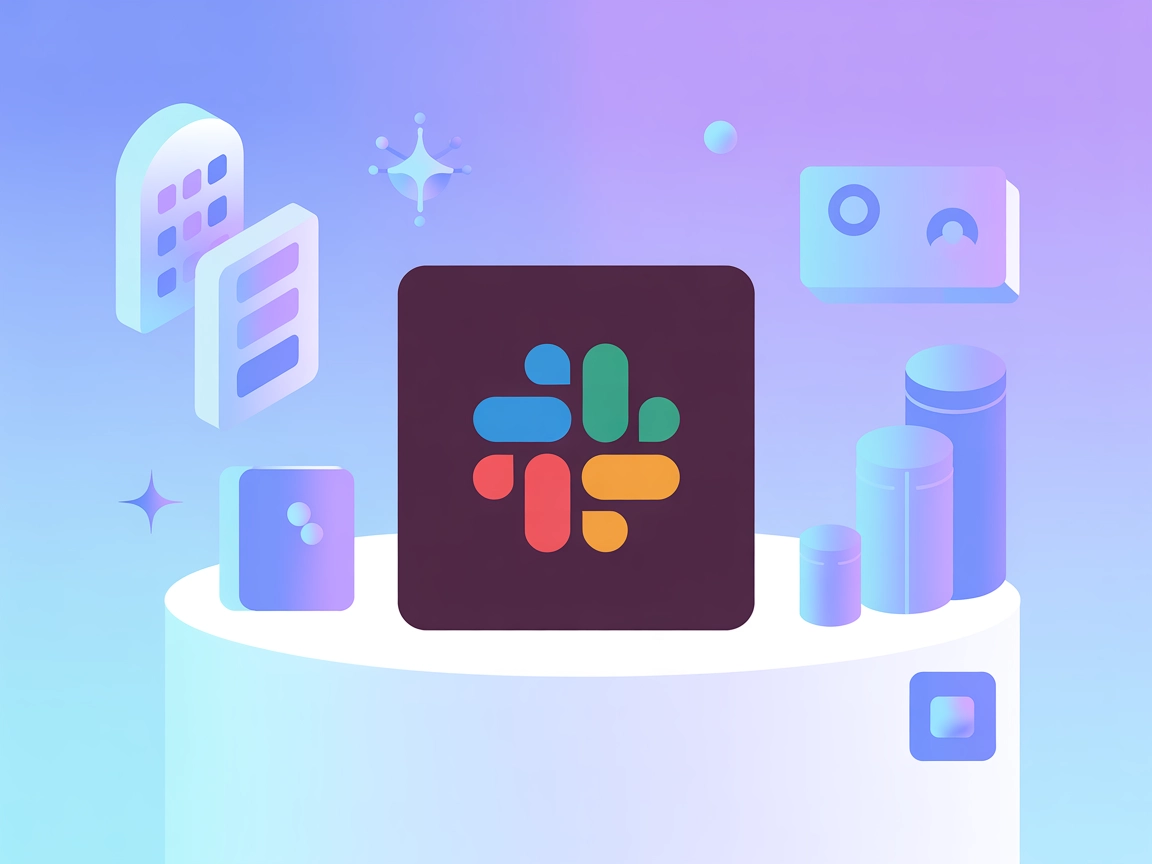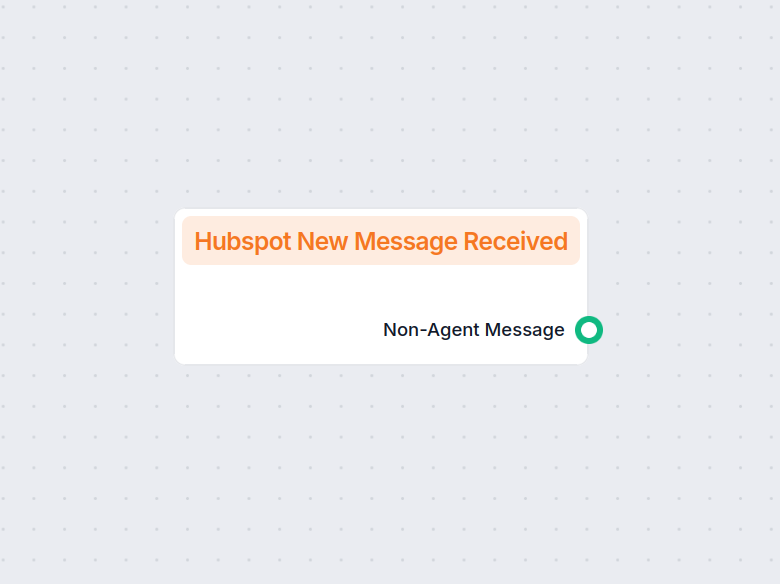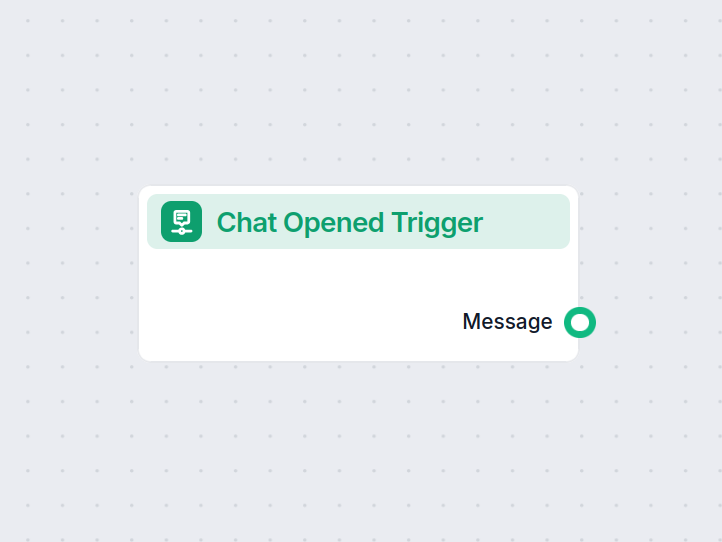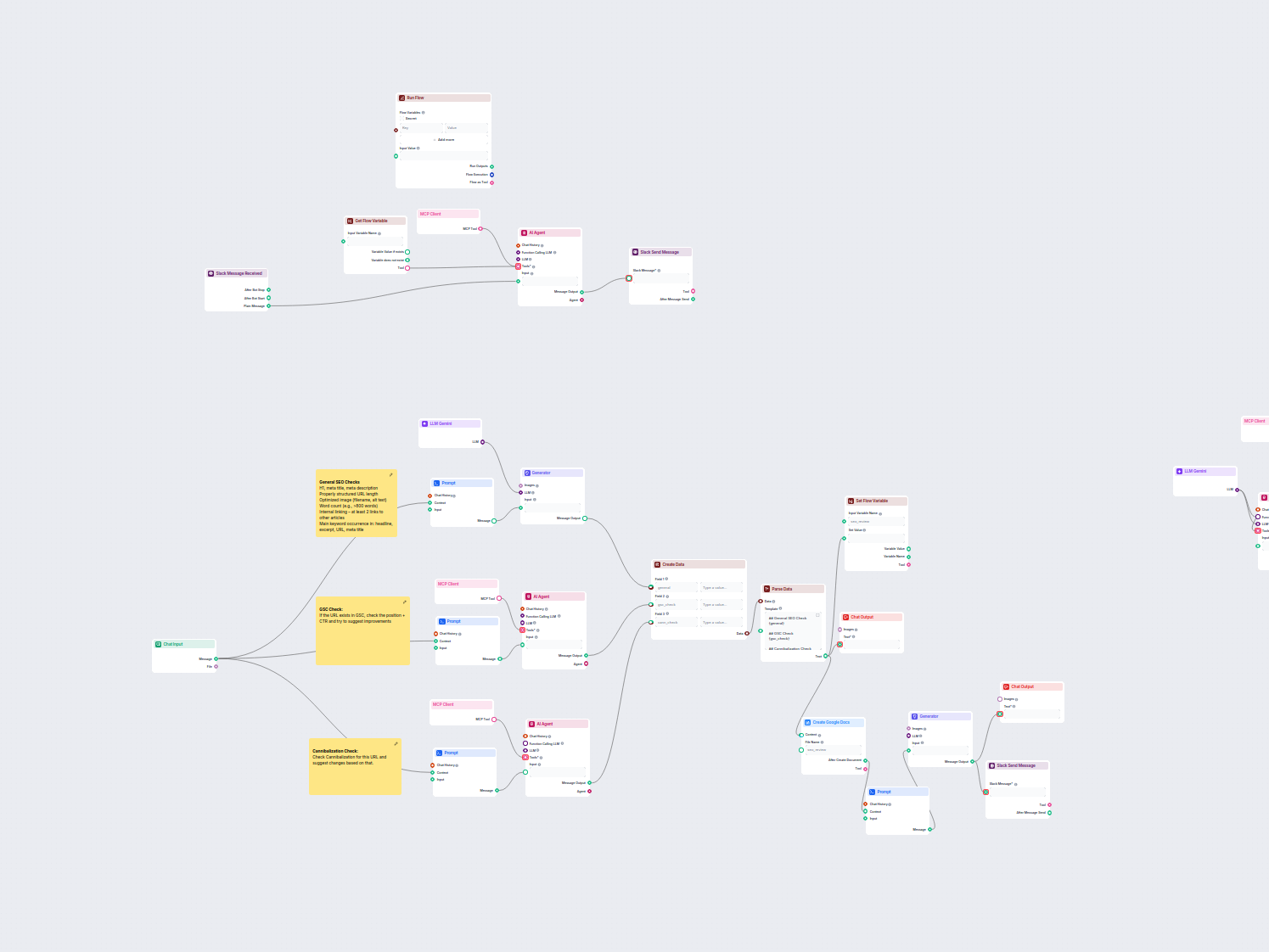
Automated SEO Audit & Slack Workflow
This workflow automates the SEO review and auditing process for website pages. It analyzes page content for SEO best practices, performs Google Search Console a...
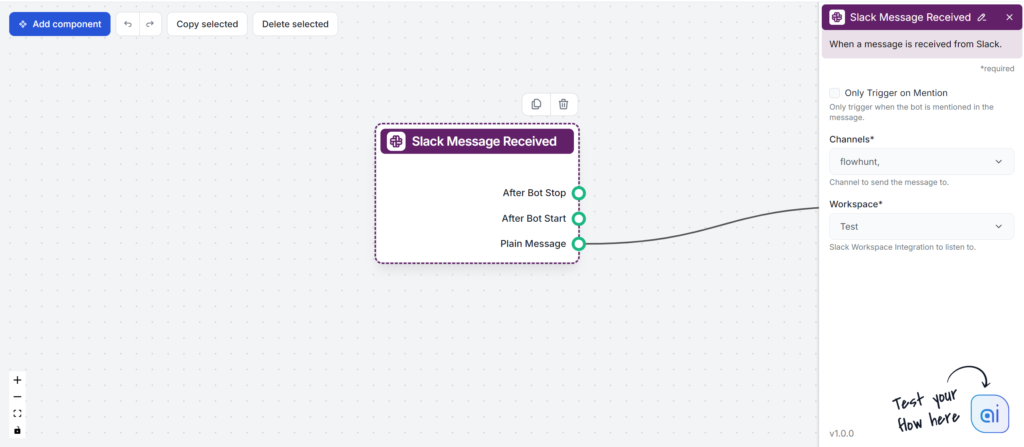
The Slack Message Received component in FlowHunt lets you control Slack responses with trigger settings and output handles, starting automated flows in your Slack workspace.
Component description
This component represents the user message at the start of a Slack conversation with FlowHunt. You can think of it as a trigger component or an Input component. It lets you control when, where, and how Flo’s Slack responses are triggered.
Using this component requires an active Slack Integration. If you haven’t integrated Slack yet, follow this guide.
The Slack Message Received component is a trigger node designed for AI workflows that need to react to incoming Slack messages. It allows your workflow to listen for messages in specific Slack channels and respond or process them further as part of your automation.
This component listens for messages sent to selected Slack channels within a specified Slack workspace. When a message is received, it triggers the rest of your workflow, passing along the content and metadata of the message for downstream processing. It’s especially useful for integrating Slack communications with AI-driven processes, such as chatbots, notifications, or data logging.
Setting up channels and workspace is necessary for the Flow to work.
| Field | Description | Required | Type |
|---|---|---|---|
| Workspace | Select the Slack workspace integration where the component will listen for messages. | Yes | Dynamic single select |
| Channels | Choose one or more Slack channels to monitor for incoming messages. Up to 5 channels can be selected. | Yes | Dynamic multi-select |
| Only Trigger on Mention | If enabled, the workflow is only triggered when the bot is mentioned in a message. | No | Boolean (true/false) |
| Slack Message | The actual message content received from Slack. (Used internally, not shown in UI) | No | Message |
Note: Some fields, such as “Slack Message”, are primarily used for internal message passing within the workflow and are not displayed to end users.
When a message is received, the component produces several outputs that can be used by subsequent nodes in your workflow:
| Output | Description | Type |
|---|---|---|
| Plain Message | The received message content. | Message |
| After Bot Start | Message output after the bot has started. | Message |
| After Bot Stop | Message output after the bot has stopped. | Message |
These outputs provide flexibility in how your workflow handles different message events from Slack.
This component is essential for anyone looking to build intelligent, responsive Slack integrations as part of an AI-driven process.
This setting controls how you trigger an answer from FlowHunt:
To help you get started quickly, we have prepared several example flow templates that demonstrate how to use the Slack Message Received component effectively. These templates showcase different use cases and best practices, making it easier for you to understand and implement the component in your own projects.
This workflow automates the SEO review and auditing process for website pages. It analyzes page content for SEO best practices, performs Google Search Console a...
Integrate FlowHunt with Slack to automate messaging, trigger workflows, and keep your team in the loop with AI-powered flows.
It acts as a trigger at the start of a Slack conversation with FlowHunt, allowing you to control when, where, and how Slack responses are triggered based on settings and user mentions.
You can select which Slack channels and workspaces to add FlowHunt to, and choose whether the bot responds to all messages or only when mentioned.
Yes, you must have an active Slack integration with FlowHunt before you can use the Slack Message Received component.
Output handles let you define what happens after events in Slack, such as after the bot starts, stops, or receives a plain message.
Start building AI-powered workflows in Slack. Streamline conversations and automate support with FlowHunt’s no-code platform.
This component represents FlowHunt’s Slack messages back to you. It lets you control where and how FlowHunt sends messages and who it notifies.
Trigger automated workflows in FlowHunt whenever a new message is received from HubSpot. Ideal for integrating communication-based automation, this component en...
The Chat Opened Trigger component detects when a chat session starts, enabling workflows to respond instantly as soon as a user opens the chat. It initiates flo...
Cookie Consent
We use cookies to enhance your browsing experience and analyze our traffic. See our privacy policy.
